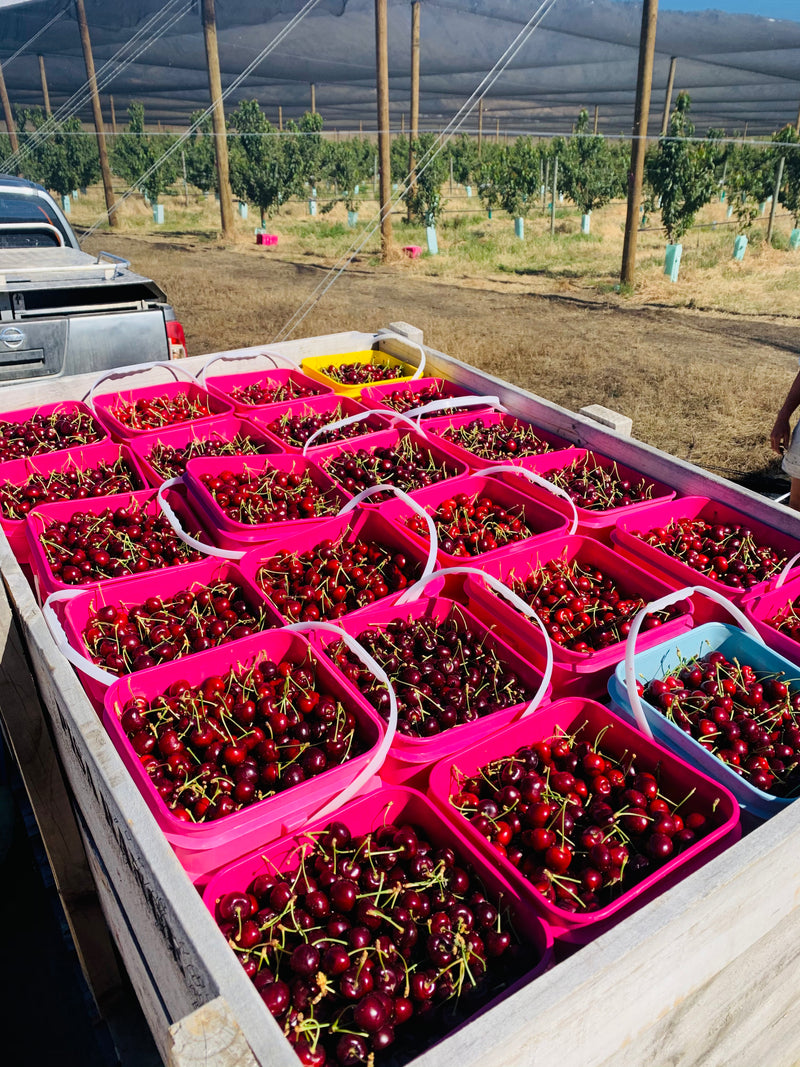Knowing when cherries are perfectly ripe means you get to enjoy them at their very best. It's all about catching them at just the right moment when they're juicy, sweet, and full of flavour. Picking ripe cherries is an experience that brings you closer to nature and the delicious rewards it offers.
To find the ripest cherries, look at their colour and feel their texture. These visual and touch cues help you decide if they're ready to enjoy. It's also fun to test their taste, seeing if that perfect balance of sweetness has been reached. This ensures you're getting top-quality fruit that shines in every bite.
Harvesting cherries at the right time ensures they're packed with natural sweetness and nutrients. With a few simple tips, you can manage your harvest days well, ensuring your cherries are just right. Once picked, it's essential to handle and store them correctly to maintain their freshness. Understanding these methods makes you ready to enjoy cherries at their peak, whether you're snacking on them or adding them to your favourite recipes.
Signs of Ripeness: Colour and Texture
Identifying when cherries are ripe involves a close look at their colour and feel. Cherries change colour as they mature, moving from a light hue to a rich, deep shade. For most sweet cherry varieties, a dark red or even a deep purple is a good sign that they're ready to be picked. Some cherries, like Rainier, ripen to a golden yellow with a pinkish blush.
Texture is just as important as colour. A ripe cherry should feel firm but slightly soft when gently squeezed. It shouldn't be too hard or too squishy. A firm fruit indicates that the cherry is juicy and fresh. If the cherry is too soft, it could be overripe, and if it's too firm, it might not be as sweet.
Checking the stems can also give you clues. Ripe cherries usually have bright green stems. If the stems are brown or dry, the cherries may be past their prime. Also, look for cherries that are plump and shiny. Dull or wrinkled cherries might not have that fresh taste you're looking for.
These visual and tactile cues will help you pick cherries that are bursting with flavour and ready to enjoy. Always inspect cherries carefully to get the best quality possible for your snacking or cooking needs.
The Taste Test: Sweetness and Flavor
Before committing to a large harvest or purchase, give cherries a taste test to judge their ripeness. A well-ripened cherry will taste sweet with just a hint of tartness. This perfect balance is what makes cherries so enjoyable.
To perform a taste test, take a sample cherry and give it a try. If the flavour is rich and sweet, then it's likely ripe and ready for eating. If there's more tartness than sweetness, it might need a few more days on the tree. Avoid cherries that lack flavour or taste bland, as these haven't reached their peak ripeness.
Keep in mind that different cherry varieties might have slightly different taste profiles. Some cherries are naturally sweeter, while others have a pronounced tangy note. This means understanding the specific variety can provide a better guideline for what to expect in terms of taste.
By using taste as an indicator, you ensure that the cherries you pick or purchase are of the highest taste quality. This joyful process gives you confidence that your fruit is ready to be a delicious part of your meals or snacks.
Timing Your Harvest: Optimal Picking Days
Timing is crucial when harvesting cherries to ensure they reach their full potential in taste and texture. Cherries ripen after picking, so it's important to choose the right day to harvest them for maximum sweetness and juiciness.
To determine the best picking days, monitor weather conditions. Sunny and warm days help cherries ripen perfectly, while too much rain can cause cherries to split or become waterlogged. After a few dry, sunny days, you'll often find the cherries are at their peak.
Keep an eye on local harvest calendars or consult with local growers who can offer insights about specific timing in your region. These resources can help you time your picking to coincide with the ripeness window.
Another tip is to taste test cherries on the tree over several days. This helps identify a trend in flavour development, allowing you to pinpoint the optimal harvest day. By choosing the right moment for harvesting, you ensure that the cherries you pick are at their very best.
Tips for Handling and Storing Ripe Cherries
Once you've picked ripe cherries, handling them with care is crucial to maintain their freshness. Start by gently placing the cherries in a shallow container. Piling them in too deep can bruise the fruit at the bottom.
Refrigerate cherries as soon as possible. They should be kept at a cool temperature to preserve their texture and flavour. Don't wash cherries until you're ready to eat them, as moisture can accelerate spoilage and mould growth.
Here are some tips for storing cherries:
- Use Breathable Bags: Store cherries in perforated plastic bags to allow air circulation.
- Keep Dry: Line storage containers with paper towels to absorb excess moisture.
- Don’t Pit Until Ready: Pitting cherries before storage can cause them to lose juice and freshness.
By following these simple steps, your cherries will stay fresh and delicious, ready for snacking or cooking whenever you need them.
Conclusion
Understanding when cherries are perfectly ripe involves a combination of observing colour, texture, and taste. The right timing ensures that you harvest them at their sweetest, allowing you to maximise their flavour and nutritional benefits. By handling and storing cherries correctly, you can extend their freshness and enjoy the delightful taste longer.
At Pure Organic Cherries, we’re dedicated to helping you enjoy the best NZ cherries possible. Whether you’re growing your own or buying them from a market, use these tips to ensure you're getting the ripest cherries. Shop Pure Organic Cherries and pick up the freshest cherries that will take your taste experience to the next level.



